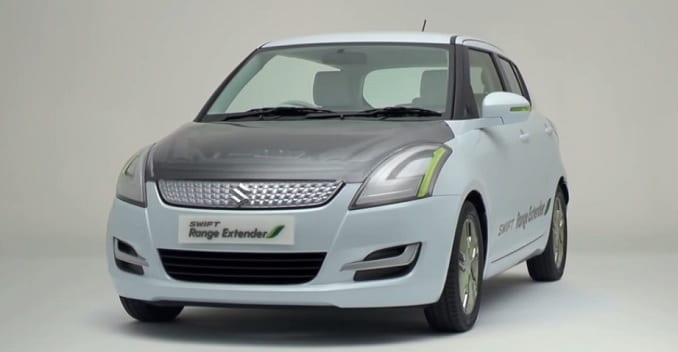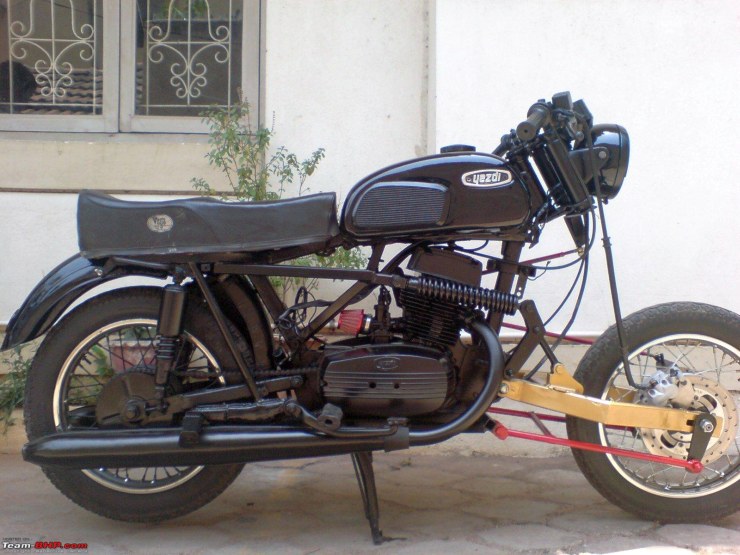From gas burning lamps in the 1880s to laser beams today, the humble headlight has undergone a massive transformation. We've charted its fascinating progress

Image via Jonathan Leung/Flickr
Headlights are one of the most prominent features of a car’s design. When you look at the face of a car, the headlights are its eyes, and are often key to influencing how we feel about the vehicle’s attitude; angled lights can make it look angry; rounded lights often denote a cuter character.
But as is so often the case with parts of a car, there’s far more to a headlight’s design than just its shape. Get up close to the assembly of a classic car, and you’ll often find a plain and simple ‘function over form’ unit. As technology has developed, however, designs have become more intricate, and the way in which your car illuminates the road has become more and more fascinating.
We’ve taken a look at how headlight technology has evolved:
The early days: acetylene

A carbide/acetylene lamp fitted to a bicycle. Via Wikimedia Commons.
Originally, headlights were powered by either acetylene or oil-fuelled lamps, however the former was preferred as it was more resistant to wind and rain. The lamp typically has a mirror behind the flame to help focus the light forwards, but it does not create a particularly focused beam. This makes it the preferred light source for cavers and miners, where an evenly-spread, widely-scattered light helps improve peripheral vision in pitch black conditions, but it is less effective in cars as the light scatters into the night sky.
Acetylene lights were introduced in the late 1880s, and were prevalent into the early 1900s, when electric lights become more feasible.
Electric headlights

"1930 Peerless restored by Brando Pistorius" by Joanne Pistorius. Via Commons.
Electric headlights were first introduced around 1900, but took about a decade to catch on as it was very difficult to create a dynamo small enough for the car that still produced enough power to light the bulb.
The first manufacturer to make electric headlights standard across its range was Peerless in 1904. Four years later, a company called Pockley Automobile Electric Lighting Syndicate offered a complete set of electrically-powered lights, which included headlights, sidelights and rear lights, all running from an eight volt battery. By 1912, Cadillac had integrated its electrical ignition system with its lighting setup to create the kind of electrical system we see today.
Sealed beam

"Jaguar E-type (serie III) - headlamp" by Matěj Baťha. Via Commons.
Sealed beam headlights were introduced in 1939, and use a parabolic reflector (a curved mirror that focuses the light), a filament, and a lens sealed together. This provided a more focused, brighter light source for cars, using a tungsten filament. The downsides to these bulbs were that they provided little light considering the amount of power they used, and the boiling filament could leave dark residues on the glass, limiting the amount of light passing through.
In 1962, the first vehicle-mounted halogen lamps were produced in Europe. These provided even brighter, longer lasting headlights, due to the way the halogen gas reacts with the tungsten. This process allowed incredibly high visibility, particularly on high beam settings.
High-intensity discharge (HID)
High-intensity discharge lamps produce light by creating an electrical arc between two metal electrodes through an inert gas, inside a glass bulb. The advantage of these bulbs is that they are far more efficient than traditional bulbs, as they create more light compared to the amount of electricity used.
Another advantage HIDs give is that because they produce more light relative to power consumed, the units could be smaller without impacting the light emitted. This gave designers more freedom to design headlights in more creative ways.
HIDs became popular in the early 2000s, and were quickly picked up by the aftermarket. The problem with this was that because HIDs create a brighter, more focused light source, fitting them to traditional light assemblies that scatter light caused problems with dazzling. HIDs require specific assemblies that ensure the light source is focused in the correct place.
Light-emitting diodes (LED)

"Audi TT 8S Matrix-LED-Scheinwerfer Abblendlicht LED-Tagfahrlicht" by Mario von Berg. Via Wikimedia Commons.
Light-emitting diodes are very useful light sources, as they’re bright, require very little energy to illuminate, and last an incredibly long time. The first automotive applications began in 2004, when they were used in the Audi A8’s daytime running lights.
In 2006, the Lexus LS 600h became the first car to use LEDs in low beam headlights, with high beams remaining as traditional filament bulbs. Just a year later, the V10 Audi R8 became the first car to use LEDs in every section of its headlight cluster.
Audi continued to pioneer LED technology, with its fascinating adaptive high beam technology. The way it works is by using 25 individual LEDs in each headlight, with the car able to switch off or dim individual diodes that are pointing at another car. This allows you to maintain full beam around the cars that surround you without blinding the drivers. The lights also use satellite navigation to check the way the road is winding ahead of you in order to direct the light towards a curve before you’ve even turned the wheel.
Lasers
The latest innovation in headlight technology uses laser beams. The BMW i8 became the first production car to go on sale with laser beams emitting from its front end.
The way it works is three diodes shoot blue laser beams into a prism, which focusses the lasers into one beam. This beam is passed through a phosphorous lens that transforms the light from blue to white, before hitting a reflector that redirects the beam out onto the road.
The laser unit is a whopping 30 per cent more efficient than LEDs, and can illuminate up to double the distance, at 2000 metres. It is not as focused as the LED light, so lasers are only used for high beams, while LEDs are used for low beams.
The Audi R8 LMX also uses lasers, however it uses four diodes instead of three, and works in tandem with LEDs. According to Audi, it provides a colour temperature of 5500 Kelvin, which is kind on the human eye and allows you to see more clearly. An intelligent camera also looks ahead and adapts the laser’s beam so as not to dazzle other drivers.



















 Image via Jonathan Leung/Flickr
Image via Jonathan Leung/Flickr































